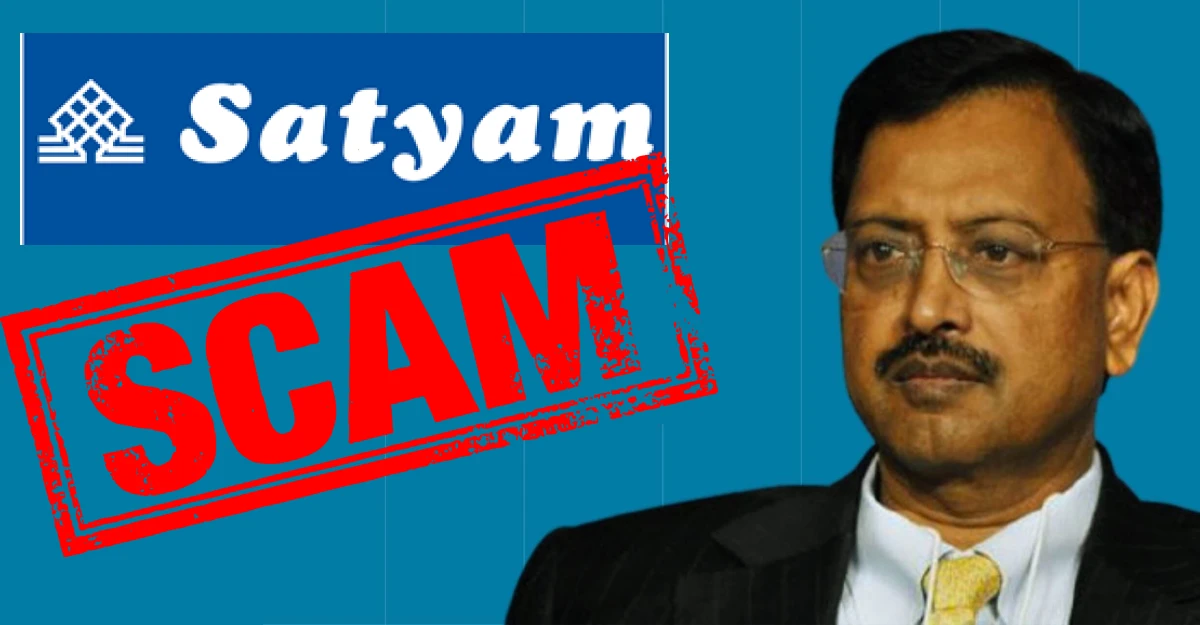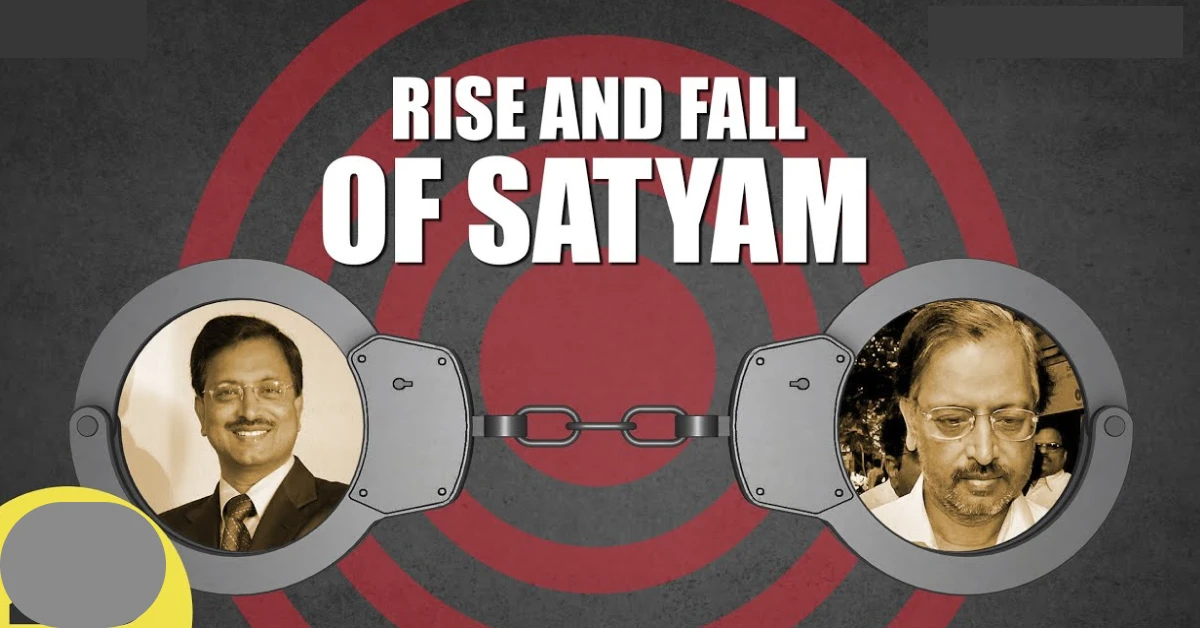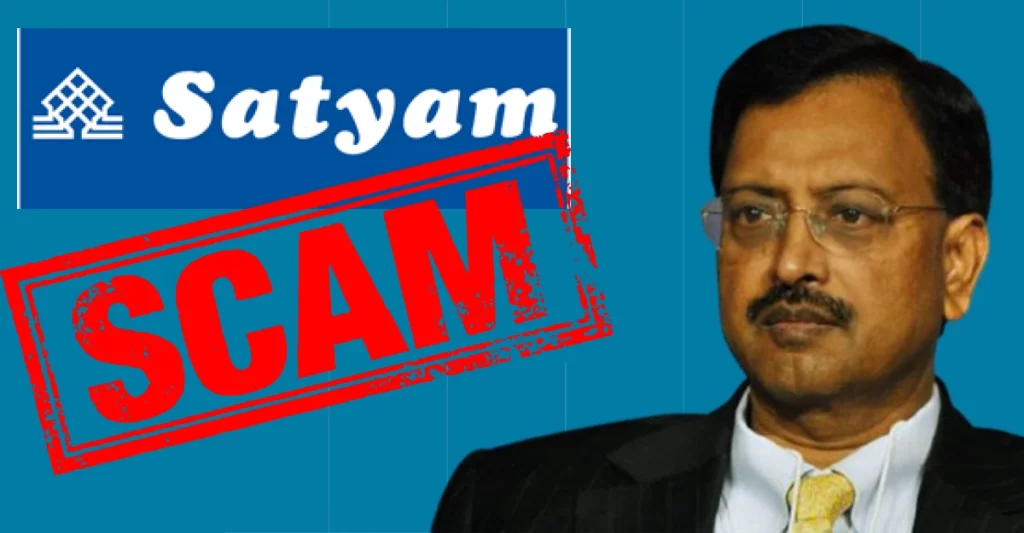Fourteen years back, four IT companies were the top stars of India namely- TCS, Infosys, Wipro, and Satyam Computer Services. The first three are still prevalent today. But the last one became highly infamous for India’s most catastrophic scams. Yes, it is true!

Today, people remember Satyam Computers Services as the biggest corporate scammer rather than a famous IT company. With scams, you may assume that Satyam’s owners might have taken away the money as loans like Nirav Modi or Vijay Mallya.
Well, it is somewhat true. But that’s not all! There’re more entangled stories to this infamous scam that thrashed the reputation of our IT industry in the global market.
So, in this write-up, we will delve into the Satyam Scam Case Study. Also, we will look at the significant changes made in Indian laws to prevent such scams.
Stay tuned!
A Brief Overview of the Scam
Satyam Scam is a corporate fraud of 2009 committed by Ramalinga Raju. He was the chairman of the Satyam Computer Services. He founded the company in the year 1987. Within two decades, its worth rose to $2 billion. Although he stepped the stones for the scam back in the 2000s. But it came to the limelight in the year 2009. Ramalinga Raju, infamously known as Satyam Raju was the prime individual behind this scam.
What did he do? You may ask.
He exaggerated the financials of the company that included-
- Sales
- Earnings
- Cash Balances
- Personal Numbers (money)
Not just that but also used the company’s money unfairly for its benefits. He used most of the shareholder’s money to buy real estate properties. And when the value of real estate properties fell during “The Great Recession (2008-09),” the tables turned. All of his plans failed and he was left with no choice but to confess the crimes.
Can you guess the worth of this largest accounting fraud in India?
Rs.7800 crore!
Satyam Scam shook the nation to its core. It highlighted how much we lacked in the following segments-
- Corporate governance
- Auditing standards
- Regulatory monitoring
- Ethical behavior
Every individual associated with Satyam Computers, including its auditors, stockholders, board of directors, etc. faced severe consequences of the scam.
How the Indian Government reacted to this scam? Well, it established the following legal acts-
- The Companies Act of 2013
- The accounting organization must report the fictional assets and contingent liability of their client company in the audit report.
- SEBI Regulations 2015
- Establishment of SFIO (Serious Fraud Investigation Office)
In the upcoming sections, you will get full coverage of the Satyam Scam Case Study.
(A) Satyam Computers-Service Limited: Rise & Downfall

(A.1) 1987-1991: The Foundation
It was the time of the 80s. The brother duo- Rama Raju and Ramalinga Raju founded an IT company in Hyderabad in 1987. They named it “Satyam Computers-Service Limited.” Why such a unique name? You may ask. The term “Satyam” is a Sanskrit word meaning “Truth” or “Honesty.” Quite contrary to what it did afterward! It began its IT journey with 20 employees.
(A.2) 1991-2003: Publicly Listed
Four years later, in 1991, it held an IPO and was listed on BSE (Bombay Stock Exchange). Soon, it became the fourth-largest IT software exporting company in India after TCS, Wipro, and Infosys. Not only was it listed on NSE and BSE but also on NASDAQ.
(A.3) 2003-2008: Exponential Growth Phase
In 2003, the worth of Satyam increased to $1 billion. It didn’t stop there. Its employment count exceeded 50,000 and was operating in over 60 countries all around the world. The success of the company continued with the following highlights-
- Satyam’s worth rose to $2 billion in 2008
- CAGR: 40%
- Operating profits: 21%
- Increase in stock price: 300%
- Satyam acquired Maytas (a real estate company owned by Mr.Raju).
- The company was awarded with “Golden Peacock Award for Corporate Accountability.
- Mr. Ramalinga Raju won the “Ernst and Young Entrepreneur of the Year” award in 2008.
(A.4) The year 2009: Satyam’s Scam Exposed
As soon as the great recession hit the global market, the tables turned for everyone. Satyam’s chairman “Ramalinga Raju” confessed to the manipulation of the company’s financials.
Wait… All of a sudden?
Didn’t the company was going through a purple patch worth $2 billion?
Yes, it represented itself as a successful company and it was making profits too! But apart from those scammers, nobody knew what was happening behind the screens.
Look at the fabricated balance sheet & income statement of Satyam–
| Items | Actual Value (in crore) | Reported Value (in crore) | Difference (in crore) |
| Cash and Bank Balances | Rs.321 | Rs.5361 | Rs.5040 |
| Accrued Interest on bank FDs | Nil | RS.376.5 | Rs.376 |
| Understated Liability | Rs.1230 | None | Rs.1230 |
| Overstated Debtors | Rs.2161 | Rs.2651 | Rs.490 |
| Total | Nil | Nil | Rs.7136 |
| Revenue (Q2 FY 2009) | Rs.2112 | Rs.2700 | Rs.588 |
| Operating Profits | Rs.61 | Rs.649 | Rs.588 |
Can you see how Mr. Raju manipulated the account books to represent Satyam as a far bigger enterprise than it was? This fraud shattered the dreams of investors, the public, regulators, as well as the government.
(B) Satyam Scam: India’s Biggest Account Fraud
Now, it is time to decode the behind-the-screen events of the scam. Ever since the company went public through IPO in 1991, its performance was outstanding. It was earning good fortunes along with winning the trust of investors. Afterward, the following series of events occurred-
(B.1) Ramalinga Raju’s greed for real estate properties
“Greed hits people when they crave for more despite having surplus!” It is an old saying which proved to be true for Satyam. Ramalinga Raju saw an exclusive opportunity in real estate properties.
Why?
Because these are evergreen assets.

That’s why he established a property development company named “Maytas” (backward spelling of Satyam). Through this company, he bought real estate properties all over India!
So what’s the problem with that?
The problem was the source of funds! Initially, he bought the properties with his own money. But as soon as his funds became a limiting factor, he switched to the funds of the Satyam Company. What a scenario! His funds ended but not his greed…
(B.2) Internal Trading: He bought the lands with high ROI

In the late 90s era, the Hyderabad metro was under construction. Through internal trading, he managed to procure information about the metro route. So, he bought the land near the metro rail projects, hoping to get higher returns in the future. He became an aggressive property buyer.
Didn’t anybody notice the humongous purchase of lands by Satyam Raju?
No! Not really. Why? You may ask. Because he purchased the real estate properties in the name of his relatives and servants. In some of the companies associated with “Maytas,” he named some of his servants as directors and continued to expand his portfolio.
(B.3) Illegal Procurement of Funds
Here comes the crucial part of the scam. How did Satyam Raju obtain money for real estate investments? By manipulating the finances of Satyam Company! That’s all? Yes. This approach was enough to offer multiple benefits to Mr. Raju.
How?
In the following ways-
- The exaggerated financials of the company made the investors believe that Satyam was performing outstandingly. Thus, it attracted more investments.
- He procured loans from the banks by showing fabricated bank statements and fictional assets.
- He faked the sales invoices as well as the cash reserves.
In the table described above, you can see the extent of the fabrication of Satyam’s account statements. The total difference between actual and exaggerated financial value touched Rs.7136 crore!
What exactly was he planning to do? You may wonder.
He was working on the principle of “Fake it until you make it!” Since he knew that one day, the value of his real estate properties will reach sky-high. Therefore, he planned to match the actual financials of the company to the manipulated ones. But the reality didn’t go as planned!
(B.4) The Great Recession of 2008

Satyam Raju’s plans went in vain as soon as the great recession hit the world including India in 2008. The real estate properties drowned rapidly resulting in a great loss for Mr. Raju. He tried to manage the situation by introducing the Maytas Company. This strategy backfired him strategically. But this drew more attention to his fraudulent activity.
He failed to sell the Maytas’ infrastructure and properties. The Satyam shareholders and board members have a large conflict of interest. Eventually, Satyam’s stock price dropped by 55%.
(B.5) Confession of Satyam’s Raju
In the aftermath scenario, Mr. Ramalinga Raju was left with no choice but to confess the crimes. In January 2009, he acknowledged the inflation of Satyam’s assets by Rs.7,800 crores which accounted for 94% of the company’s assets. Also, he admitted to overstating the company’s finances by Rs.5040 crore.
This news spread like a forest fire. Once trading at Rs.544 per share in 2008, its share prices fell to just Rs.11.50 in 2009.
(C) Aftermath Tragedy
Mr. Raju’s confession was no less than a catastrophic event in the country’s financial ecosystem. But why did Raju confess about Satyam? He could have run away like Vijay Mallya or Nirav Modi. You may say. Thankfully, he couldn’t leave the country due to a sharp drop in real estate properties as well as his personal funds! Soon he was arrested and charged with criminal conspiracy, breach of trust, and forgery.
India learned a lot through the Satyam Scam. The Indian government responded to this scam by introducing the following acts-
Thus, our government introduced all the necessary actions to prevent such scams in the future.
(C.1) Companies Act 2013
Our government abolished the Companies Act of 1956 and introduced a new Companies Act in 2013. It included the following-
- Replacement of auditors every five years.
- Replacement of audit firms every ten years.
- The Board of Directors’ Report must include the Director’s responsibility statement.
The accounting organization must report the fictional assets and contingent liability of their client company in the audit report.
(C.2) SEBI Regulations 2015

It involved listing obligations and disclosure requirements (LODR). In this act, SEBI established the criteria for reporting actual and suspected fraud. Also, it made it mandatory to disclose the crucial events of the company. Mainly the events that can influence the decision-making ability of the investors.
(C.3) SFIO: Serious Fraud Investigation Office
It is the regulatory authority that was constituted under the administration of the Ministry of Corporate Affairs. It became a statutory organization under the Companies Act of 2013. Thus, it looks into business and accounting fraud in India.
Conclusion: The Finale
The term “Satyam Scam” fits the best when it comes to contradictory phrases in an Indian context. How? You may ask. The Sanskrit word “Satyam” means truth or honesty. And the English word “Scam” means fraud with a lie.
Satyam Computers Services Limited was acquired by Tech Mahindra. The latter bought the 51% stake in Satyam and renamed it “Mahindra Satyam.”
Later, in June 2013, Mahindra Satyam merged into Tech Mahindra. Thus, the existence of the Satyam Company was buried forever!
Also, IL & FS acquired 80% of the equity in Maytas Properties (MPL) in 2011. IL&FS is Infrastructure Leasing & Financial Services, an NBFC (Non-Banking Financial Company).
What can we learn from the Satyam Scam Case Study?
Satyam scam teaches the significance of moral, ethical, and social principles in the corporate world. Also, the board members must realize the gravity of trust and responsibility placed on them. The information about the company must be transparent and accurate. Only then a company can win the trust of the shareholders.


That’s a shocking case. Feeling so sad for the investors and those who were harmed with Satyam’s collapse. The culprits should be punished severely. Please suggest some guidelines for less-risky investments.
This article is presented in a well-structured and informative manner. I heard about it previously but lack of data and clarity.
Well Explained Supti and their team !!